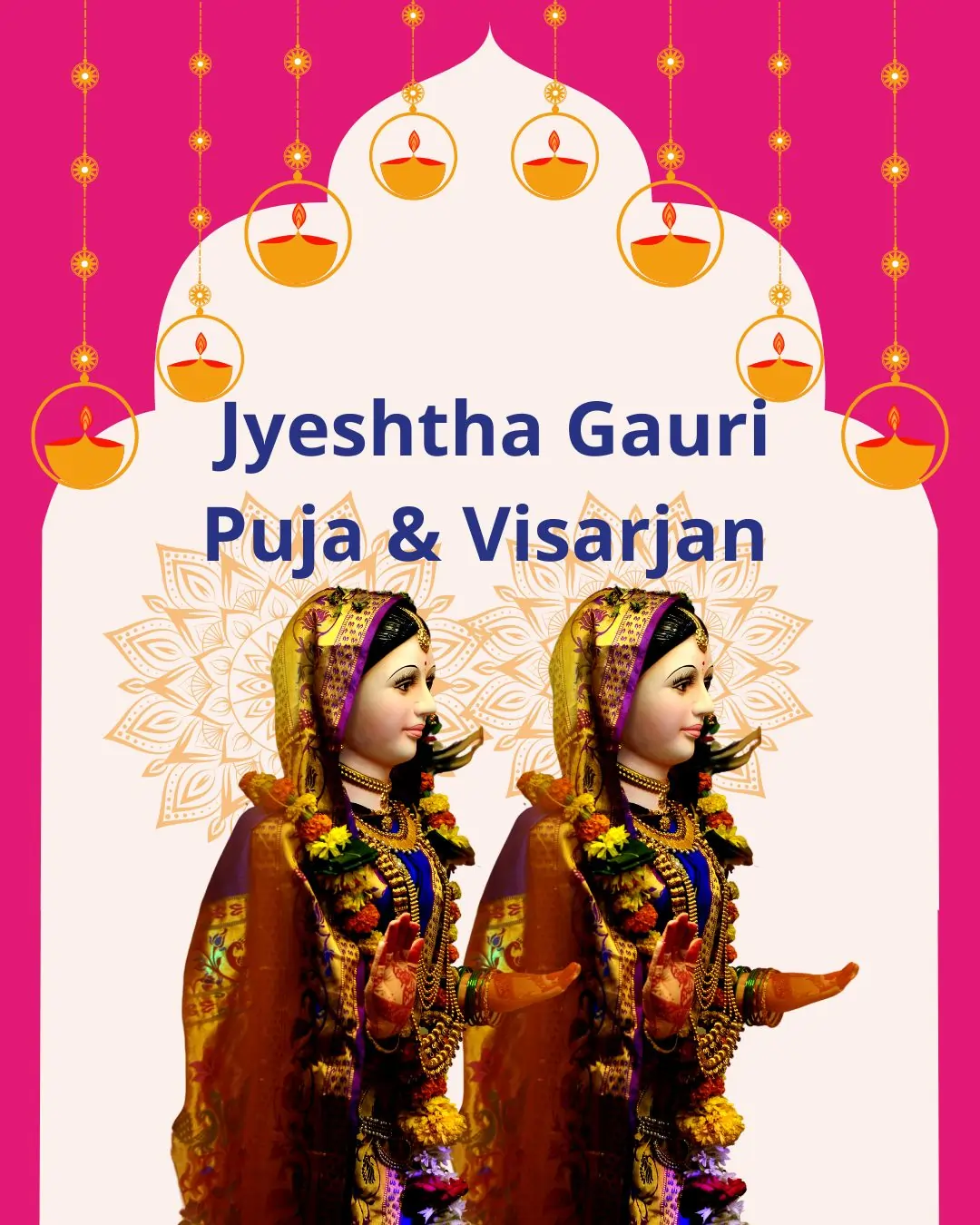Jyeshtha Gauri Puja 2025 Important Date
Jyeshtha Gauri Puja 2025 brings one of Maharashtra’s most cherished festivals to devotees on September 1–2, 2025, falling on the auspicious Bhadrapada Shukla Tritiya and Chaturthi. This sacred celebration honors Goddess Gauri, the divine consort of Lord Shiva, and marks a significant spiritual occasion for millions of devotees across India.
Also known as Gauri Ganpati, this beautiful tradition merges devotion, cultural heritage, and community spirit. The festival spans two transformative days—beginning with the elaborate Gauri Puja rituals on September 1st and culminating in the emotional yet joyous Visarjan (immersion ceremony) on September 2nd.
Key Timings and Calendar Details for 2025
- Jyeshtha Gauri Puja: Monday, September 1, 2025
- Jyeshtha Gauri Puja Muhurat: 05:59 AM to 06:43 PM
- Duration: 12 Hours 43 Mins
- Jyeshtha Gauri Avahana: Sunday, August 31, 2025
- Jyeshtha Gauri Visarjan: Tuesday, September 2, 2025
- Jyeshtha Nakshatra Begins: 05:27 PM on August 31, 2025
- Jyeshtha Nakshatra Ends: 07:55 PM on September 1, 2025
Talk to Astrologer for Free
During Jyeshtha Gauri Puja 2025, devotees welcome the benevolent Goddess Gauri into their homes and hearts, seeking her blessings for prosperity, marital harmony, and family well-being. The festival holds special importance for married women, who engage in detailed rituals, offer prayers, and participate in vibrant cultural programs showcasing Maharashtra’s spiritual richness.
Whether you’re celebrating for the first time or continuing a family tradition, this guide will help you understand the essence of the festival. It covers its background, key customs, and practical tips for making your celebration more meaningful.
Spiritual and Cultural Significance
Jyeshtha Gauri Puja coincides with Ganesh Chaturthi and celebrates the arrival of Goddess Gauri (a form of Parvati) into households. Devotees believe her presence brings prosperity and bliss. The first day focuses on invoking and worshipping the goddess, while the second day is reserved for the Visarjan—an emotional send-off with deep symbolic meaning.
Rituals and Celebrations Explained
Installation of Idols
Devotees install two intricately decorated idols of Goddess Gauri, often representing her and her sister.
Puja and Offerings
They perform rituals including chanting, aarti, and offer sweets such as modaks and puran poli, fruits, and flowers.
Family and Community Bonding
The celebration often includes community participation, cultural programs, and traditional Maharashtrian food.
Visarjan
On the second day, families immerse the idols in water, symbolizing the Goddess’s return to her celestial abode.
Frequently Asked Questions (FAQ)
1. Who is Goddess Gauri?
An incarnation of Goddess Parvati, associated with fertility, wealth, and family harmony.
2. Why is Jyeshtha Gauri Puja celebrated?
To invite prosperity and joy into the home by worshipping Goddess Gauri.
3. What rituals are performed during the puja?
Idol installation, detailed puja, offerings of sweets and flowers, followed by Visarjan.
4. How long is the festival?
Two days: Puja on the first day, Visarjan on the second.
5. Is it celebrated outside Maharashtra?
Yes, by Maharashtrian communities across India and abroad.
6. Can unmarried women take part?
Yes, they often participate and seek blessings for a happy married life.
7. What are the essential puja items?
Turmeric, kumkum, coconut, diyas, sweets, flowers, and traditional cloth for the deity.
8. Are there mantras specific to the festival?
Yes, including the Gauri Ashtottara Shatanamavali.
9. Why two idols?
They represent Goddess Gauri and her sister, symbolizing sisterhood and strength.
10. What does Visarjan signify?
The departure of the Goddess after bestowing her blessings.
11. Can idols be immersed at home?
Yes, especially eco-friendly clay idols can be immersed in a water bucket at home.
12. What foods are associated with the festival?
Modaks, puran poli, shrikhand, and other sweets.
13. Is fasting mandatory?
Not mandatory, but many observe a fast as a mark of devotion.
14. What should one wear during the rituals?
Traditional attire—saree for women and kurta-pajama or dhoti for men.
15. Is it related to Ganesh Chaturthi?
Yes, both festivals are often celebrated together.
16. What is the meaning of Avahana?
It is the ritual of invoking the deity’s presence into the idol.
17. Can a priest be skipped?
Yes, families can perform rituals with guidance from online resources or family elders.
18. How to prepare for the puja in advance?
Clean the home, gather all puja items, and set up the space for idol installation.
19. Is online/virtual puja acceptable?
Yes, many now attend or organize virtual pujas.
20. Can children participate?
Yes, involving children helps pass on the cultural values.
21. What are regional variations?
Slight differences exist in customs and food preparations across Maharashtra.
22. Are there any dos and don’ts?
Avoid using non-biodegradable idols, and maintain ritual purity and respect.
23. Can Visarjan be delayed?
Ideally, it should be done on the scheduled date.
24. Is Jyeshtha Gauri Puja linked to any mythological story?
Yes, it symbolizes Parvati’s visit to her maternal home.
25. What is the best way to involve the whole family?
Assign tasks, encourage participation in decoration and cooking, and share stories about the festival’s meaning.
Sources
Stay tuned for more detailed insights on upcoming Hindu festivals!


1 Comment